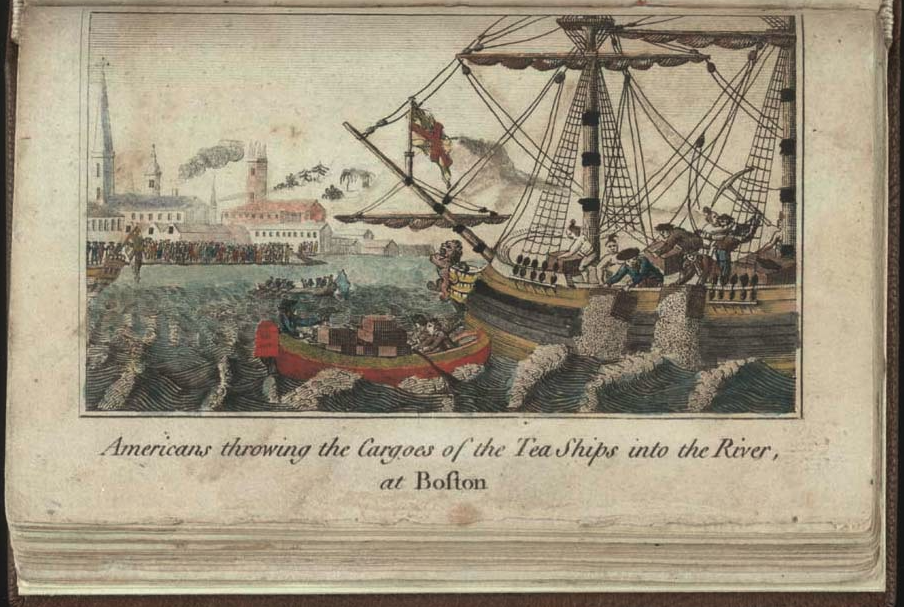What would Freemasonry be today if it were not for the men who came before us? Where would we all be today without the triumphs, struggles, conflicts, resolutions, of our past? Gathering this weekend goes beyond hot dogs, apple pie and fireworks. Let us remember that a difficult and courageous struggle took place at this time more than 200 years ago. Freemasons played important roles in leading a new nation towards freedom, carving a path to independence that would guide generations of families and brothers. Today, we will follow this journey.

A New World with Rising Tensions
It’s 1756. The start of The Seven Years War. From this point until 1763, new territories were being established for the British Crown. Conflicts with France were generating expenses that ultimately took the form of high taxes for colonial citizens. Prior to these years of conflict, rumbles of frustration were already rippling throughout the colonies. The British Monarchy egregiously infiltrated colonial trading, taking advantage of colonial resources and slashing their ability to retain economic benefits. The work and contributions of the colonies were undermined, taken advantage of, and left with unfair compensation in trading.
Most notably, the series of tax laws that would follow would ultimately become the catalyst for a revolution. The Stamp Act of 1765 and The Townshend Acts of 1767 built a fiery resentment against British Rule and inspired an intense desire for independence. Masonic leaders of this time were known to transform this rage into a calculated assault on the British Monarchy, all with the dreams to be independent.
The Boston Massacre
It’s now 1770. Unknown to the colonists and soldiers standing in King Street of Boston, Mass., the snowy evening of March 5th would erupt into chaos. Colonists were angry that a guard, Private Hugh White, stood outside the Customs House to keep watch over a store of the King’s money. Anger quickly turned to violence resulting in five fatally shot colonists, and a group of British soldiers serving a civilian trial.
After the events, it was the leadership of Masons like John Hancock and Paul Revere that gave this conflict purpose in the fight against the British. Bro. Paul Revere’s famous etching depicting the massacre incited a widespread passion to fight for freedom. Anger has limited power. However, Masons proved that a controlled and thoughtful strategy that channeled anger into productive means of diplomacy was effective.
The Boston Tea Party
We are now in 1773, and the British Parliament has passed the Tea Act. As a protest, a group of Boston colonists dumped 342 crates of tea into the Boston Harbor. Patriot leader Samuel Adams organized the mission with 60 members of an underground resistance group, motivated by goals of functioning as an independent nation, stormed the British vessels of the Boston Harbor and dumped the tea.
The subsequent outrage of the British Monarchy drove Parliament to pass the Coercive Acts or the Intolerable Acts in 1774. These acts prevented merchant shipping in Boston, established full military rule of Massachusetts, and prevented British officers from being prosecuted for crimes while in the colonies.

Paul Revere’s Ride
It’s now 1775 and conditions have worsened. On the night of April 18, Bro. Paul Revere took to his famous Midnight Ride, sending a warning that British troops were marching to take control of the colonial armory in Concord. What commenced as dawn broke became known as The Great Battle at Lexington and Concord. Minutemen took to the rocks and trees in the forests along the British route. Completely bewildered by what was the advent of guerilla warfare, outnumbered the British forces suffered heavy losses on a beleaguered retreat back to Boston. This battle resulted in more than 200 British deaths, and the loss of almost 90 American Patriots.
The Light Towards Independence
More conflict ensued. The Battle of Bunker Hill would result in the loss of more than 40% of the colonists’ assault force. Thomas Paine’s Common Sense would support the efforts towards independence. Eventually, we are in the year 1776. The Continental Congress voted on the Declaration of Independence, drafted primarily by Thomas Jefferson, and was officially adopted on July 4th.
Throughout the conflicts, tensions, political turmoil, and retaliations, history provides insight into the guiding efforts of significant Masonic figures. Historians and those interested in filling the gaps of our past have their guesses as to the role that Freemasons had on the formation of this great nation. Ultimately, what is most clear, is the leadership, selflessness, and dedication to Brotherly Love, Relief, and Truth that remained constant throughout. Enjoy this Independence Day Brethren, and remember our history.
How are you celebrating freedom this weekend? Share with us at OhioLodgeLife@gmail.com, or find us on Facebook and Twitter.